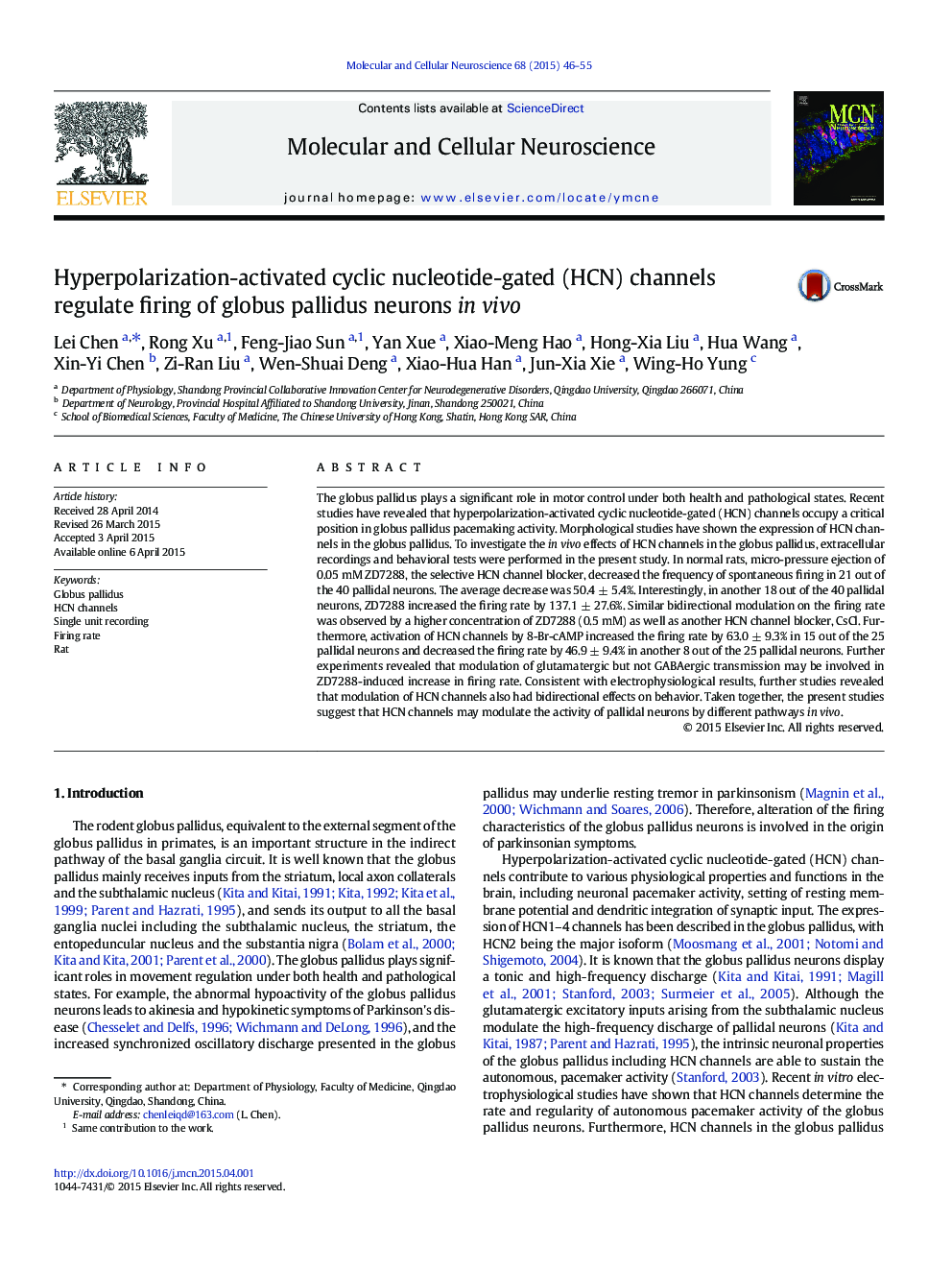| Article ID | Journal | Published Year | Pages | File Type |
|---|---|---|---|---|
| 8478522 | Molecular and Cellular Neuroscience | 2015 | 10 Pages |
Abstract
The globus pallidus plays a significant role in motor control under both health and pathological states. Recent studies have revealed that hyperpolarization-activated cyclic nucleotide-gated (HCN) channels occupy a critical position in globus pallidus pacemaking activity. Morphological studies have shown the expression of HCN channels in the globus pallidus. To investigate the in vivo effects of HCN channels in the globus pallidus, extracellular recordings and behavioral tests were performed in the present study. In normal rats, micro-pressure ejection of 0.05 mM ZD7288, the selective HCN channel blocker, decreased the frequency of spontaneous firing in 21 out of the 40 pallidal neurons. The average decrease was 50.4 ± 5.4%. Interestingly, in another 18 out of the 40 pallidal neurons, ZD7288 increased the firing rate by 137.1 ± 27.6%. Similar bidirectional modulation on the firing rate was observed by a higher concentration of ZD7288 (0.5 mM) as well as another HCN channel blocker, CsCl. Furthermore, activation of HCN channels by 8-Br-cAMP increased the firing rate by 63.0 ± 9.3% in 15 out of the 25 pallidal neurons and decreased the firing rate by 46.9 ± 9.4% in another 8 out of the 25 pallidal neurons. Further experiments revealed that modulation of glutamatergic but not GABAergic transmission may be involved in ZD7288-induced increase in firing rate. Consistent with electrophysiological results, further studies revealed that modulation of HCN channels also had bidirectional effects on behavior. Taken together, the present studies suggest that HCN channels may modulate the activity of pallidal neurons by different pathways in vivo.
Related Topics
Life Sciences
Biochemistry, Genetics and Molecular Biology
Cell Biology
Authors
Lei Chen, Rong Xu, Feng-Jiao Sun, Yan Xue, Xiao-Meng Hao, Hong-Xia Liu, Hua Wang, Xin-Yi Chen, Zi-Ran Liu, Wen-Shuai Deng, Xiao-Hua Han, Jun-Xia Xie, Wing-Ho Yung,
